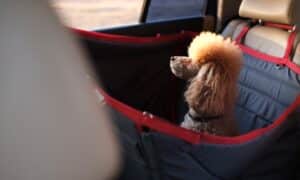Housetraining your dog is the first things you should engage in upon adoption. Either having a new puppy or an older dog, there is no reason for you not to appropriately housetrain your beloved dog. Actually, every year, a lot of dogs are forced to look for new homes every time their current owners does not succeed in their housetraining duty and become weary of the dog having accidents in their home. But before you start, remember that it will take some time and tons of dedication for both of you, so you should promise to give your dog with the proper attention during this process.
*Time your training: Like people, a dog’s bladder must totally be developed before it can fully function. With this, puppies may be quick to have accidents at home for the reason that they cannot control it. On this given situation, refrain from threatening, verbally abusing, or physically harming your dog. Normally, a puppy can control his bladder when he reaches the age of four or five months, even though this age has been known to vary in smaller breeds of dogs.
*Skip Indoor Training: Earlier, dog owners are accustomed to first train their dogs to do their business indoors at a particular spot in the house, and then eventually move to outdoor training afterwards. However, this practice is no longer efficient and we can now skip indoor training and go straight to begin with outdoor training instead. It can sometimes be bewildering for a dog to be permitted to relieve himself indoors one instance, then scolded for not going outside the next time.
*Practice Confinement: Confining your dog to a roomy area in your home can be a good technique on how to train him where to relieve himself whether left alone in the house or not. Rather than letting your dog to have free rein at your home, provide him with his own space that he can claim as “HIS”. This will help you do the cleaning easier and hassle-free. If he begins to demonstrate typical bathroom behavior (such as frantic walking, whining, squatting, or sniffing), directly make an effort to bring him outside.
*Develop a Command: Think of a command that your dog can correlate with going outside to do his business. This technique can make your life easier without compromising any scheduled task.
*Separate Tasks: Normally, going outside usually involves playing, so dogs then are more focused on playing than doing the business at hand. Rather than letting your dog play during their bathroom trips, think of changing his outside surroundings. Let your dog roam in the entire yard particularly for the reason of relieving himself, then go back home and lavish him with praise and treats. Next, make another trip to allow your dog to play. This separation of tasks will ensure your dog does not become preoccupied and hinders him from doing his business outdoors. Sooner or later, once your dog is fully attuned with the setup, you can then change these double trips into a single one.





